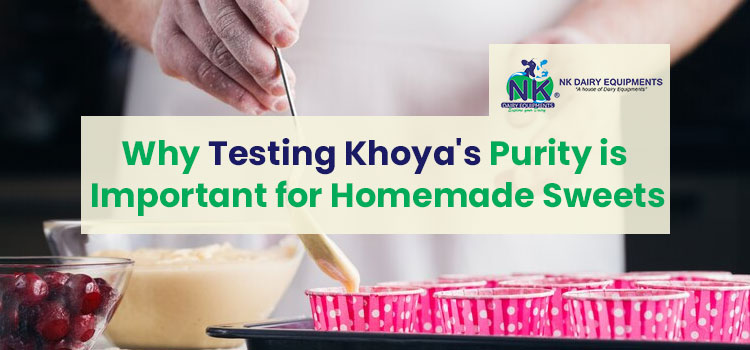When it comes to making homemade sweets, the ingredients’ quality is of utmost importance. Khoya or mawa is a key ingredient in many traditional sweets like barfi, gulab jamun, and pedal. However, there have been several instances of adulteration in khoya, which has raised concerns about its purity. To ensure that the khoya you are using is pure, it is essential to know some easy methods to test its quality. Keep in mind that khoya produced through Khoya Machine.
Easy Methods to Test Khoya’s Quality
One of the easiest ways to test khoya’s quality is using iodine. Add a teaspoon of khoya to a cup of hot water. Drop a little bit of iodine into the cup. If the khoya turns blue, it has been degraded using starch. On the other hand, if the khoya does not change colour, it is pure produced with a khoya machine and fit to use. This method is recommended by The Food Standards and Safety Authority (FSSAI) and is a quick and easy way to test khoya’s quality.
Another method to test khoya’s quality involves using concentrated sulfuric acid. Add some concentrated sulfuric acid to a small sample of khoya or milk in a beaker. If there is a violet-coloured formation in the sample, it might be degraded. This method detects chemicals like formalin, used as a preservative in milk or khoya.
Apart from these methods, there is another way to test the purity of khoya at the time of purchase itself. Pure and fresh khoya has an oily and grainy texture. It tastes sweet and leaves a trail of grease when rubbed on your palm. To test the khoya’s quality, take a small sample and rub it on your palm before purchasing it. If it has the above characteristics, it is pure. You can also taste-test it to ensure no odd flavor in it.
While testing khoya’s quality is essential, ensuring that the sweets you consume are made using high-quality ingredients is equally crucial. Many sweet shops use vanaspati instead of ghee to save money, which can harm health. Vanaspati is high in trans fat, which can increase the risk of heart disease, stroke, and diabetes. To test the presence of vanaspati in the sample, add it to a container and mix two tablespoons of hydrochloric acid and one tablespoon of sugar in it. If the mixture turns red, the sample is impure.
How to Ensure the Sweets You Consume Are Made Using High-Quality Ingredients
To avoid health risks, buying khoya from reputed sellers or making it at home using high-quality milk bought from Dairy Plant Manufacturer is advisable.
In conclusion, testing khoya’s quality is essential to ensure your sweets are pure and safe to consume. The above mentioned methods are easy and can be done at home to test the khoya’s quality. Moreover, ensuring that the sweets you consume are made using high-quality ingredients is essential to avoid any health risks. You can enjoy your favorite sweets without any worries by being vigilant and taking necessary precautions.




